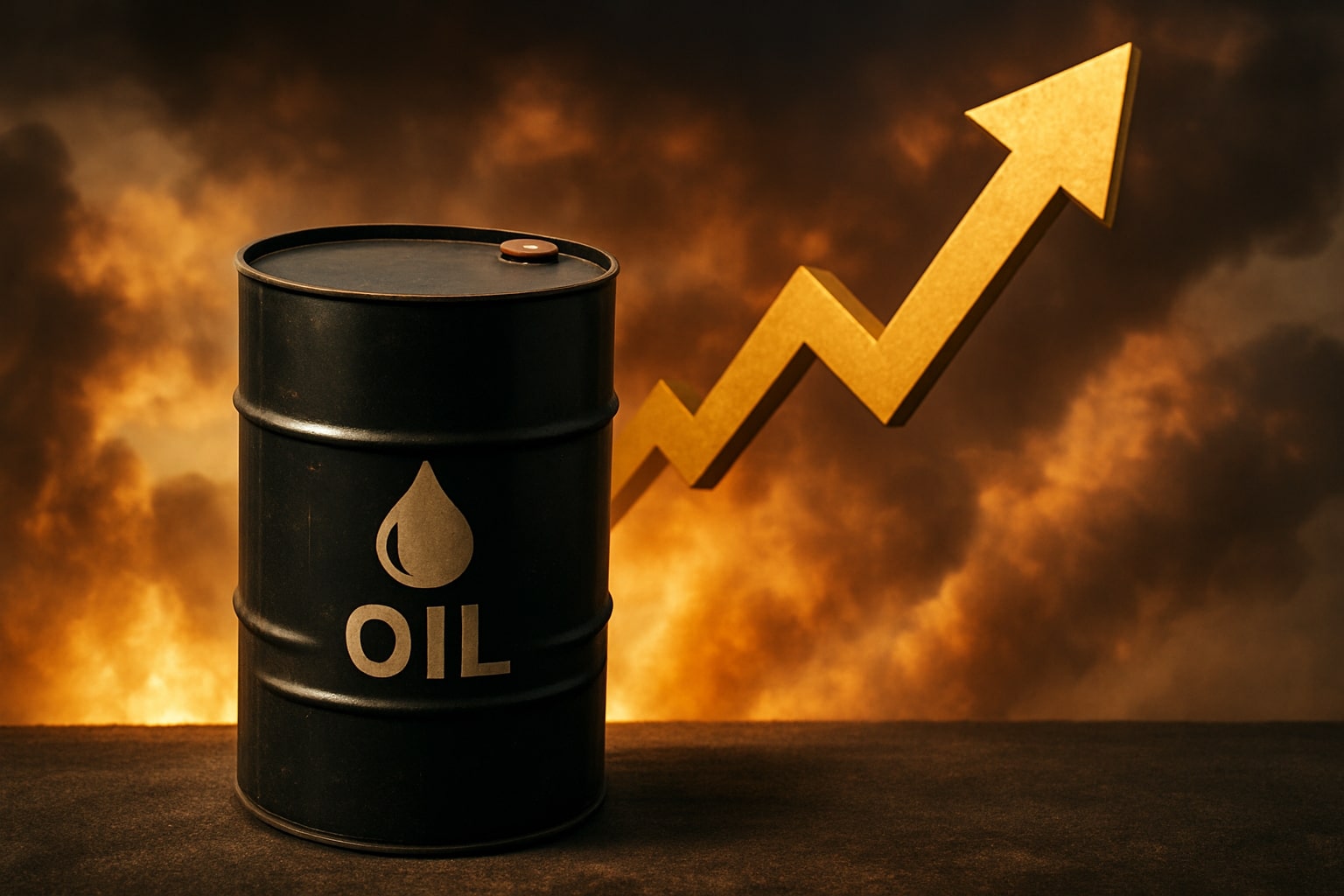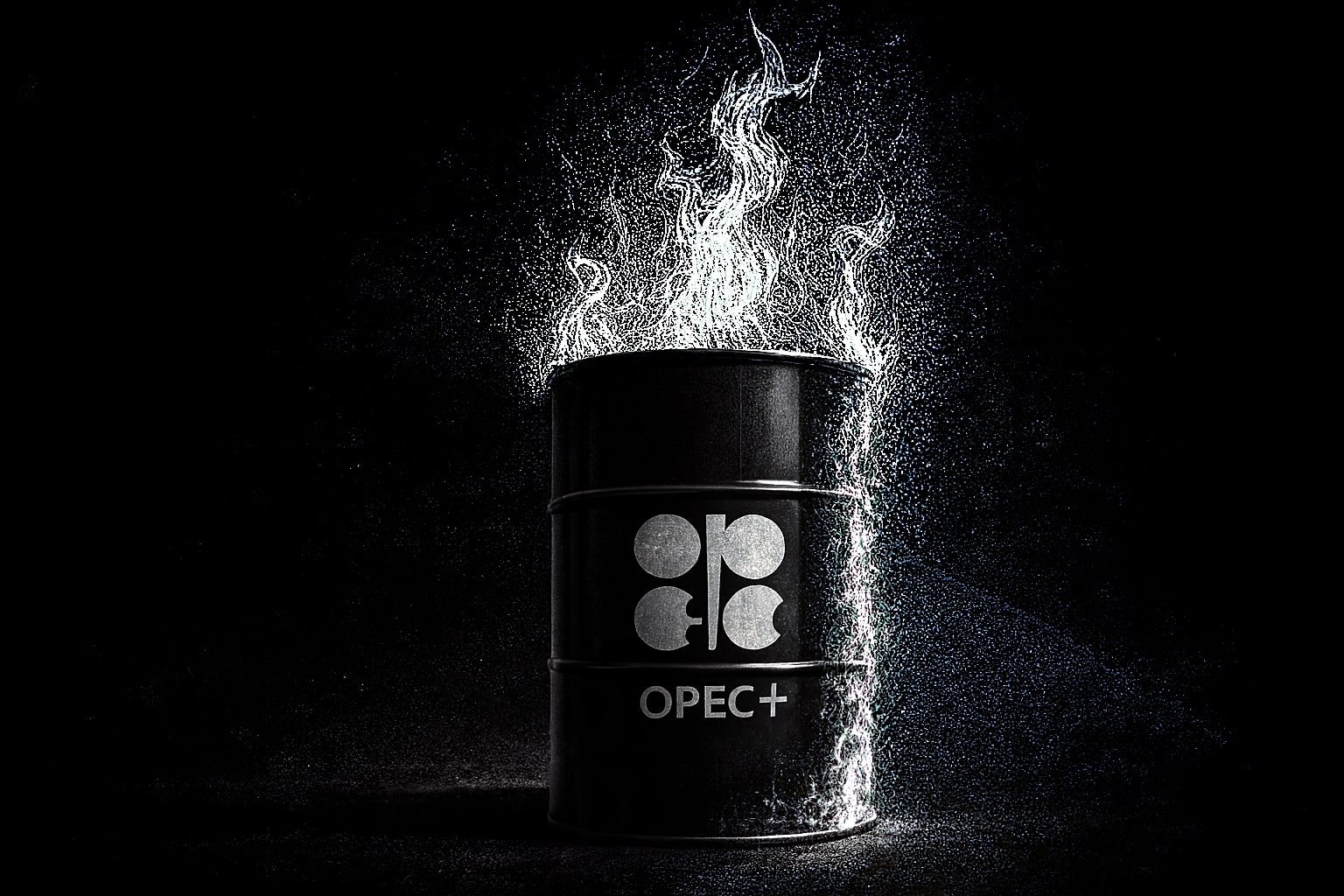
WTI at $61.14 and Brent at $64.16: What’s Influencing Oil Prices in 2025?
With WTI at $61.14 and Brent at $64.16, what are the key factors shaping the future of oil prices? | That's TradingNEWS
Oil Prices Struggle with Tariff War and Economic Uncertainty, With Key Shale Players Facing Slowdown at $60 Per Barrel
WTI and Brent Crude Prices Slip Amidst Geopolitical Tensions and Uncertainty in U.S.-Iran Deal
As of May 16, West Texas Intermediate (WTI) crude oil prices have seen a slight dip, trading at $61.14 per barrel, down from $61.24 from the previous day. Similarly, Brent crude has fallen, now trading at $64.16 per barrel, following a previous close of $64.29. While these price movements appear relatively small, they represent the ongoing volatility in the oil market as geopolitical factors, including the potential for a U.S.-Iran nuclear deal, continue to weigh heavily on global prices.
Goldman Sachs has slightly revised its forecast for global oil demand, now expecting an increase of 600,000 barrels per day (bpd) in 2025, up from previous expectations. However, the bank has kept its price forecast largely unchanged for the year, predicting that Brent crude will hold steady around $60 per barrel, while WTI is expected to average $56 per barrel for the remainder of 2025. Despite current prices surpassing these forecasts, factors such as U.S.-China trade tensions and the potential end of the U.S.-Iran standoff contribute to significant price volatility.
The announcement of a possible nuclear deal between the U.S. and Iran has created ripples throughout the oil market. Although President Trump recently indicated that the two countries were close to sealing a deal, differing positions on uranium enrichment have dampened optimism. If the deal materializes, it could lead to a significant increase in Iranian oil production, further pushing global supply up, thus potentially lowering the price of oil. However, Goldman Sachs analysts caution that if the tariff war between the U.S. and China resumes, Brent crude could plummet to as low as $40 per barrel by late 2026.
OPEC+ Supply Cuts and U.S. Shale Plateau Push Oil Market into Uncertainty
In the United States, shale oil production is already beginning to plateau, with analysts suggesting that U.S. crude output may have reached its peak sooner than expected. The Permian Basin, the last major shale oil growth area, is still showing some growth, but even it may begin to slow down in the near future. Occidental Petroleum (OXY), for example, has revised its outlook for the Permian, suggesting that growth in this key shale region could flatten out sooner than anticipated, as the $60 per barrel price point struggles to support profitability for many shale operators.
Notably, ConocoPhillips (COP) and ExxonMobil (XOM), two of the largest players in the shale market, have reported that the U.S. shale boom is nearing its end. ExxonMobil has maintained that it remains strong at current prices, but ConocoPhillips warns that the profitability of shale production may take a hit at $60 per barrel and lower. As these companies face mounting challenges in the shale basins, production levels are expected to plateau, and growth could begin to stagnate as oil prices remain relatively weak.
Energy Giants Reassess U.S. Oil Production Growth Outlook Amid Economic Challenges
The overall forecast for U.S. oil production has been revised downward, with energy intelligence firms like Kpler now predicting that the country’s crude output growth will be more modest than initially expected. In fact, Kpler has reduced its U.S. crude supply forecast by 120,000 barrels per day to 170,000 bpd for 2025 and 2026. This adjustment reflects the economic challenges caused by low oil prices and high geopolitical uncertainty, including the evolving trade dynamics with China and the potential impacts of global tariffs.
Despite these challenges, there remains optimism about U.S. production, particularly in the Gulf of Mexico, where output is expected to increase in the coming years to offset declines in shale production. However, the $60 per barrel price is already a key level at which many shale producers are struggling to stay profitable. If oil prices remain at or below these levels for extended periods, it is likely that many smaller shale operators will be forced to reduce activity or shut down operations altogether.
Shifting Global Oil Supply Dynamics: OPEC+, U.S. Shale, and Potential Iranian Production
As the market braces for potential changes in global oil supply, OPEC+ is once again under pressure to decide whether to restore its previous production cuts. Goldman Sachs warns that if OPEC+ decides to restore production levels to those seen before 2022, oil prices could experience further downward pressure. Combined with the possibility of increased oil supply from Iran, these factors could dampen the outlook for Brent crude and WTI, especially if global economic growth falters due to trade tensions.
Despite the potential supply glut, demand for oil remains strong in some parts of the world, particularly as Goldman Sachs revises its forecast for global oil demand upward. Still, the prospect of increasing Iranian oil production looms large, and much will depend on the outcome of ongoing diplomatic talks. If the U.S. and Iran manage to strike a deal, the resulting influx of Iranian crude could significantly affect both Brent crude and WTI prices.
Energy Sector Faces Challenges Amid Volatility in Oil Prices
As for the broader energy sector, several oil companies are facing increasing pressure to adjust to the fluctuating prices. Diamondback Energy and Liberty Energy, for instance, are preparing for a slowdown in shale drilling as low oil prices challenge profitability. Despite near-term stability, analysts are cautious about the long-term prospects for shale production, with many expecting U.S. production to peak earlier than previously anticipated.
The economic uncertainty surrounding tariffs, trade wars, and geopolitical tensions has created an environment of volatility for the energy sector, with companies like Occidental Petroleum (OXY) and ConocoPhillips (COP) indicating that they may need to adjust their production plans accordingly. This shift could lead to a more gradual slowdown in U.S. oil output, and analysts are predicting that the country’s overall oil production may plateau sooner than expected.
In summary, the outlook for oil prices remains uncertain as the industry navigates a complex landscape of geopolitical risks, economic volatility, and shifting supply dynamics. Brent crude and WTI are likely to remain under pressure in the short term, especially if the trade war between the U.S. and China resurfaces or if diplomatic negotiations with Iran collapse. However, the longer-term outlook may see stabilization or even a recovery if demand continues to rise and supply constraints persist. Goldman Sachs maintains a relatively cautious forecast for Brent crude at $60 per barrel and WTI at $56 per barrel, though these figures could change as new geopolitical and economic developments unfold.
For investors, WTI and Brent crude remain critical benchmarks to watch, as movements in these prices will continue to shape the overall health of the global oil market and influence investment strategies in the energy sector.
That's TradingNEWS
Read More
-
SMH ETF: NASDAQ:SMH Hovering at $350 With AI, NVDA and CHIPS Act Fueling the Next Move
16.12.2025 · TradingNEWS ArchiveStocks
-
XRP ETFs XRPI and XRPR: Can $1B Inflows Lift XRP-USD From $1.93 Back Toward $3.66?
16.12.2025 · TradingNEWS ArchiveCrypto
-
Natural Gas Price Forecast: NG=F Falls to $3.80–$3.94 as Warm Winter Kills $5.50 Spike
16.12.2025 · TradingNEWS ArchiveCommodities
-
USD/JPY Price Forecast - USDJPY=X Slides, BoJ 0.50% Hike, Fed Cut and NFP Set the Next Big Move
16.12.2025 · TradingNEWS ArchiveForex



















